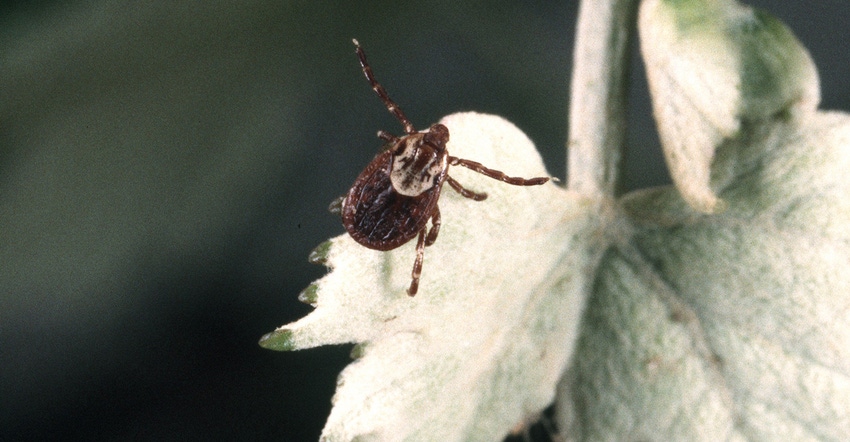May 1, 2020

When people hear the word “tick,” the first ailment that comes to mine is Lyme disease, but ticks are happy carriers of a wide range of diseases. In April, Washington State University’s Veterinary Teaching Hospital saw its first case of tick paralysis for the year.
Tick paralysis is uncommon, but it is a potentially fatal disease that can affect virtually all warm-blooded land animals and people. The illness occurs when certain species of ticks inject potent toxins from their salivary glands into the host animal. The two ticks most commonly associated with the disease include the Rocky Mountain wood tick and the American dog tick, but tick paralysis has been associated with more than 60 tick species around the world, according to the American Lyme Disease Foundation.
In the WSU case, the patient was a 3-year-old alpaca named Rose. Once Rose was admitted to the hospital, it took more than a hundred pairs of hands searching the animal’s thick wool, and a subsequent shearing, before the tick on her neck was found and removed.
Each spring and summer, WSU’s veterinary teaching hospital sees or provides consultation on several cases of tick paralysis in llamas and alpacas. Cases occur throughout the Northwest. Occurrence, however, is sporadic and difficult to predict, because the toxin does not occur in all tick populations all the time or in the same local regions.
In a press statement discussing the case, Catherine Krus, a veterinarian and large-animal intern at WSU’s Agricultural Animal Service, notes that “llamas and alpacas seem to be particularly susceptible to the effects of the toxin, and we still don’t know why. This is the first case I’ve ever seen, and I was amazed at how quickly the animal deteriorated — and then again how quickly she returned to normal after the tick was removed.” The alpaca was discharged four days after being admitted.
More on tick paralysis
The disease was first identified in Australia in 1824. In North America, ticks actually transmit more disease than mosquitoes. “Symptoms of tick paralysis include a rapidly progressing total paralysis over 24 to 72 hours after the ticks attach themselves to the animal,” Krus says. “Left untreated, an animal may be unable to chew, swallow, drink or breathe as the paralysis progresses to the respiratory system. When the breathing mechanism is paralyzed, the animal can die.”
Death rates from tick paralysis have been reported as high as 10% or more in humans and about 7% in domestic animals. Medical literature shows that in most human cases of the disease, only a single tick was found on the patient. That was also true of Rose the alpaca.
Krus explains that while the disease sounds concerning, treatment is effective, and reversal of the paralysis can be rapid with a solid prognosis. “The key is to remove the ticks and provide supportive care, working with your veterinarian. In Rose's case, she received supportive care and physical therapy to help prevent deterioration and restore function to her body and legs.”
Recovery occurs very quickly in most animals and people — within 48 hours.
Source: Washington State University, which is solely responsible for the information provided and is wholly owned by the source. Informa Business Media and all its subsidiaries are not responsible for any of the content contained in this information asset.
You May Also Like




